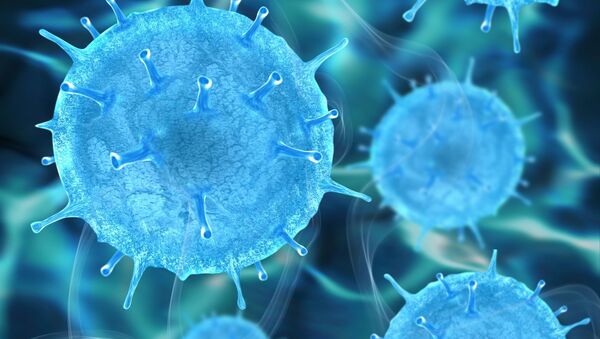A small number of coronavirus-infected ‘super-spreaders’ are responsible for the rapid spread of the virus, biologists and mathematicians from the Polish Academy of Sciences and the University of Warsaw have found.
The explosion in cases seen by many countries in the early months was the result of super- and hyper-spreaders appearing at “super-spreading events” such as football games, carnivals, demonstrations, religious gatherings and hospitals, with such venues said to have become “decisive drivers of the epidemic spread” in some nations.
The scientists' findings, published in the Royal Society Open Science peer-reviewed journal and based on advanced computer modelling, showed that between March and April, the mean number of people infected by each confirmed Corona-positive individual was not between two and four, as previously estimated by the World Health Organization, but between 4.7 and 11.4, with a tiny number of so-called super- and hyper-spreaders responsible for most infections.
“In turn, super-spreading events were very likely the main drivers of the epidemic spread in for example Italy and Germany, where, in the early exponential phase, spatial heterogeneity of registered cases had been evident. In Italy, Spain and France, this explosive phase was followed by a phase of slower growth, during which mass gatherings were forbidden, but quarantine (that finally brought the effective reproduction number below 1) had not been yet introduced,” the paper says.
In their modelling, researchers assumed that super-spreader individuals had an infectiousness about 100 times higher than ordinary individuals, while hyper-spreaders had an infectiousness roughly 200 times higher. Based on modeling of infection rates in Spain and New York State, the researchers assumed that super-spreader individuals could be responsible for up to half of infections, while hyper-spreaders could cause a whopping 66.7 percent of transmissions.
However, after removing both super- and hyper-spreaders from models while determining how much time was needed for infections to double, the scientists found that the actual figures showed that “the fraction of transmissions for which hyper-spreaders are responsible can be even larger” than two-thirds of total infections.
Global Health and Economic Crisis
An estimated 984,000 people around the world have died from coronavirus-related complications, according to researchers at Johns Hopkins University in Baltimore, Maryland, with the vast majority of them suffering from additional health complications, such as obesity or a weakened immune system.
Johns Hopkins estimates a total of 32.3 million confirmed cases worldwide. However, some medical professionals and government officials have estimated that actual infection numbers may be significantly higher, with Moscow Mayor Sergei Sobyanin estimating this summer that up to 60 percent of the residents of the Russian capital have already experienced and recovered from the disease without serious complications. Other local officials put the estimate at nearer 20 percent, significantly up on the 1.14 million total reported cases in Russia.
In addition to its impact on health (including fatalities caused by people unable to receive timely medical care because resources have been diverted to tackling the virus), the crisis has caused significant social and economic dislocation, leading to soaring numbers of suicides and cases of domestic abuse across nations, as well as a rocketing number of bankruptcies, job losses, defaults on mortgage payments, evictions, and other forms of economic pain.





